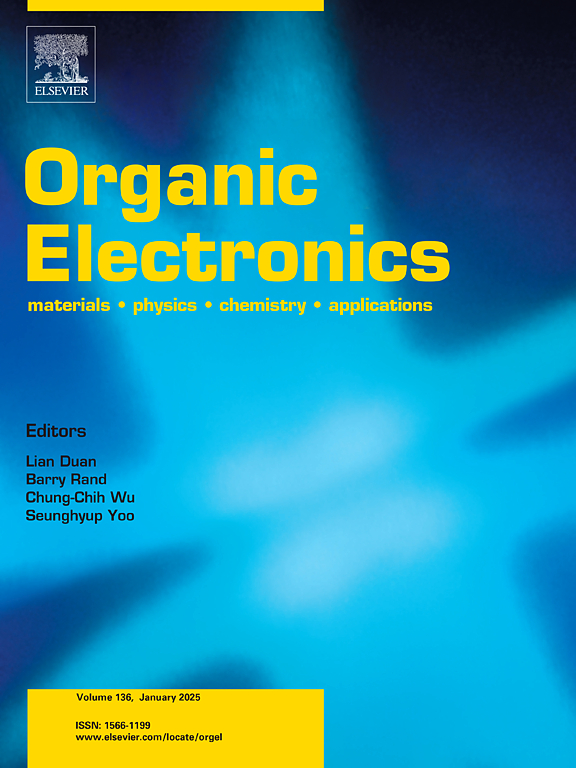High-CRI warm white OLEDs based on TADF-Doped Exciplex Co-host Structure enabled by efficient reverse intersystem crossing
IF 2.7
4区 工程技术
Q3 MATERIALS SCIENCE, MULTIDISCIPLINARY
引用次数: 0
Abstract
In this work, we present a high-performance warm white organic light-emitting diode (WOLED) achieving a maximum color rendering index (CRI) of 95, based on a novel TADF-Doped Exciplex Co-host Structure. The device design integrates a blue exciplex (mCP:PO-T2T) as the host material, sensitizing ultrathin phosphorescent layers emitting green, yellow, and red light. By systematically varying the thickness of spacer and ultrathin layers, the position of the exciton recombination zone was finely tuned, revealing its critical role in exciton transport dynamics and energy transfer efficiency. To optimize exciton transport pathways, the TADF material 4CzTPN was strategically incorporated into the spacer layers. This incorporation significantly altered the exciton transfer mechanism by facilitating efficient reverse intersystem crossing (RISC) and promoting Förster energy transfer from the exciplex to phosphorescent emitters. Consequently, this approach not only reduces triplet exciton density, mitigating Dexter transfer losses, but also enhances exciton utilization efficiency. As a result, the WOLED achieves warm white light emission with a high CRI closely aligned with the Planckian locus on the CIE chromaticity diagram. These findings demonstrate the transformative potential of the TADF-Doped Exciplex Co-host Structure for developing efficient and color-stable WOLEDs, paving the way for next-generation lighting and display technologies.

基于tadf掺杂激复共主结构的高显色温白光oled的高效反向系统间交叉
在这项工作中,我们提出了一种高性能的暖白色有机发光二极管(WOLED),该二极管基于一种新型的tadf掺杂Exciplex共宿主结构,其显色指数(CRI)最高可达95。该器件设计集成了蓝色激光体(mCP:PO-T2T)作为主体材料,敏化超薄磷光层,发出绿色、黄色和红色光。通过系统地改变间隔层和超薄层的厚度,可以很好地调整激子复合区的位置,揭示其在激子输运动力学和能量传递效率中的关键作用。为了优化激子输运途径,将TADF材料4CzTPN策略性地掺入间隔层中。这种结合通过促进有效的反向系统间交叉(RISC)和促进Förster从激子复合物到磷光发射器的能量转移,显著改变了激子转移机制。因此,该方法不仅降低了三重态激子密度,减轻了Dexter转移损失,而且提高了激子的利用效率。因此,WOLED实现了温暖的白光发射,具有高显色指数,与CIE色度图上的普朗克轨迹密切相关。这些发现证明了tadf掺杂Exciplex共宿主结构在开发高效和色彩稳定的WOLEDs方面的变革潜力,为下一代照明和显示技术铺平了道路。
本文章由计算机程序翻译,如有差异,请以英文原文为准。
求助全文
约1分钟内获得全文
求助全文
来源期刊

Organic Electronics
工程技术-材料科学:综合
CiteScore
6.60
自引率
6.20%
发文量
238
审稿时长
44 days
期刊介绍:
Organic Electronics is a journal whose primary interdisciplinary focus is on materials and phenomena related to organic devices such as light emitting diodes, thin film transistors, photovoltaic cells, sensors, memories, etc.
Papers suitable for publication in this journal cover such topics as photoconductive and electronic properties of organic materials, thin film structures and characterization in the context of organic devices, charge and exciton transport, organic electronic and optoelectronic devices.
 求助内容:
求助内容: 应助结果提醒方式:
应助结果提醒方式:


